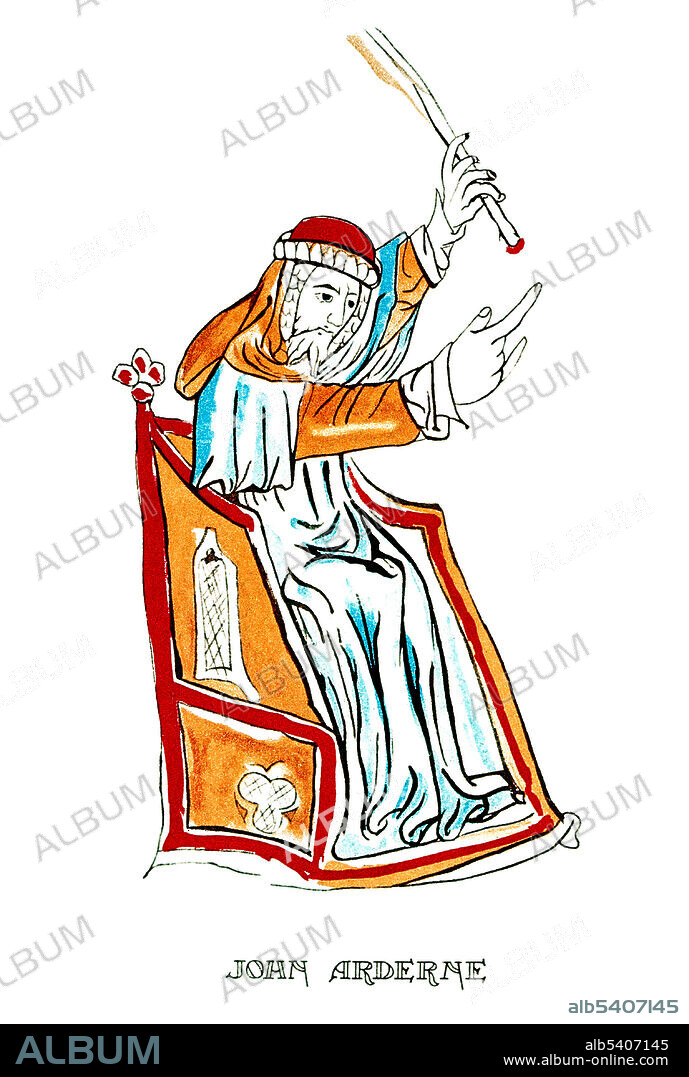alb5407145
John Arderne, English Surgeon

|
Añadir a otro lightbox |
|
Añadir a otro lightbox |



¿Ya tienes cuenta? Iniciar sesión
¿No tienes cuenta? Regístrate
Compra esta imagen

Título:
John Arderne, English Surgeon
Descripción:
Ver traducción automática
Illustration of John Arderne reproduced from a manuscript held by the British Museum. John Arderne (1307-1392) was an English surgeon, and one of the first of his time to devise some workable cures. He is considered one of the fathers of surgery, described by some as England's first surgeon. It is thought that he attended the University of Montpellier, where he was a scholar of the ancients. He was in London by 1370 when he is thought to have been admitted as a member of the Guild of Surgeons. He saw active military service in the Hundred Years' War. Many of his treatments are still in use today. Arderne's help was given to both the rich and the poor. His view on fees was that rich men should be charged as much as possible, but poor men should be remedied free of charge. His remedies for illness are considered substantial for his time. He recommended opium as a soporific and as an external anesthetic that the patient 'schal slepe so that he schal fele no kuttyng'. In 1736 created an ointment for arrow wounds and clysters made out of hemlock, opium and henbane. Near the end of his long life he achieved the title of Master Surgeon.
Crédito:
Album / Science Source / Wellcome Images
Autorizaciones:
Modelo: No - Propiedad: No
¿Preguntas relacionadas con los derechos?
¿Preguntas relacionadas con los derechos?
Tamaño imagen:
3030 x 4500 px | 39.0 MB
Tamaño impresión:
25.7 x 38.1 cm | 10.1 x 15.0 in (300 dpi)
Palabras clave:
 Pinterest
Pinterest Twitter
Twitter Facebook
Facebook Copiar enlace
Copiar enlace Email
Email
